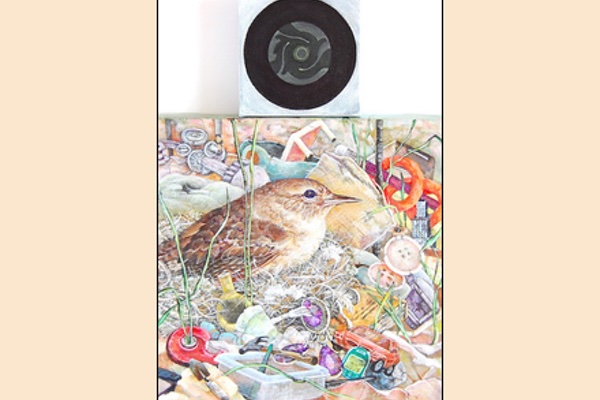“When does rule-breaking or rule-keeping
become an asset or liability for the artist?”
By Jean Eng

While surfing the internet for information on an artist whose work I happened upon and liked, a glowing review of one show described her paintings as “unabashedly narrative.” Oh hello…The phrase made me pause, piqued my curiosity. It sounded like a back-handed compliment—as if narrative qualities contained dubious merit, but because the work was so stunning, this minor infraction could be overlooked.
Of course, this comment may have simply acknowledged the vigor and unrestrained engagement demonstrated by the artist in her work. But then why or when would anyone feel apologetic, embarrassed or otherwise “unabashed” just because their approach is narrative? Is the expression used more often with certain types of work than others? Was this merely a case of one individual revealing her unconscious bias and values? Do unspoken rules, rule our attitude and how we respond towards different kinds of art?
Most artists learn about rules during some kind of formal training, the fundamentals of materials, techniques or art theory. It’s how we gain basic skills. Many of us for example, were taught that the average human figure measures seven heads down a sheet of paper. I recall how earnestly and methodically I counted spaces from top to bottom with thumb and forefinger, adjusting the original size when necessary. Position elements off-centre to avoid visual stasis or inertia. Don’t place complementary colours of equal intensity next to each other unless you want an eyesore. And of course, it’s a no-no to enclose images in thick, black outlines. This faux-pas was first committed by yours truly in art college when I realized just how fast I could finish life drawings this way. As God is my witness, I honestly believed I discovered a breakthrough. Fortunately, my drawing instructor explained without rebuke or derision, why this was not in my best interest developmentally as an artist: instead of learning to see and express the human figure, I’d proceed no further than this facile solution.
The best thing, arguably, about rules is not only the foundation they provide for future reference, but also the ability to know when to break them. But what about hidden laws that we have somehow internalized, taken for granted as part of the art-making and art-viewing experience? When does rule-breaking or rule-keeping become an asset or liability for the artist? It’s often a challenge to distinguish between a rule worth keeping, a subjective partiality that’s more about personal preference, and a belief/habit that was somehow acquired but never examined.
To illustrate, there’s still a tendency in the art world to regard work that primarily depicts flowers or sunsets as redundant, easy art. It’s also hard to ignore the principle of practicing so many hours a day at one’s craft. The mentality persists—that it’s somehow noble to be a poverty-stricken, albeit dedicated artist. It’s true; some creations demand more labour than others, but that doesn’t necessarily make them better art. In fact, artists like Georgia O’Keeffe, Paul Klee, and others have painted flowers, sunsets and drawn thick black lines around their images—despite the prevailing response these subjects provoked.
The difference was, they did so in fresh, new ways never before seen. Strict adherence to established hours does offer improvement if resources and energies are used wisely. But it can also impede growth and progress if nothing is ever accomplished except repeated mistakes and rote effort. And penniless but committed artist? As someone who has lived through it—there is absolutely nothing exalted about being poor; show me the food any day.
A video of artist Ai Weiwei films him repeatedly dropping a vase made in the Han dynasty. I’m thrilled that a contemporary Asian artist has achieved international acclaim, garnered such a high profile. Part of his success—and troubles—is due to an emphasis on “breaking” with the past in order to move forward. I get it. His severance involves shattering an actual representation of China’s traditional aesthetics. I admire Weiwei’s ideas, themes and concepts, the magnitude of his talent. But in this case, all I could think of was that he had destroyed someone else’s work. Would the statement behind the gesture have less “impact” if he’d used a fake vase? I certainly wouldn’t have flinched as much. Rule-breaking then, opens ups an age-old dilemma: how far is too far and does the end justify the means?
Most artists choose the kind of work they truly want to do, what connects with passion and purpose. Many will determine which “rules” to retain, those that no longer serve, and what prompts further investigation. Rule breakers find the art of rule keepers too safe—there’s nothing original or exciting; it’s been done before. Rule keepers note that what was once ground-breaking and revolutionary eventually goes mainstream. Also, novelty doesn’t always last; it risks becoming flavour of the month. When depth or warmth is lacking as well, it’s difficult to relate to intellectual obscurity.
I don’t believe one is better than the other; what matters is what artists do with their talent. There’s enough room for rule breakers and rule keepers to co-exist on this planet and be valued for what each has to offer. Both have delivered exceptional art as well as hot messes. Both have the power to inspire and influence artists at any stage. Major movements in art history have been created predominantly by artists who introduced bold ideas and methods in contrast to the reigning or acceptable art at the time. I’m awestruck and rather intimidated by artists who take chances and produce phenomenal results—rule-breaking pioneers so to speak.
But of the two, I’m more of a rule-keeping artist. Despite being captivated by superb, unconventional work that pushes boundaries and challenges the viewer, I still love formal art that contains images, good drawing, skillful use of design and colour. And I have a particular fondness for narratives.
Originally published on http://engjarticles.blogspot.com.

